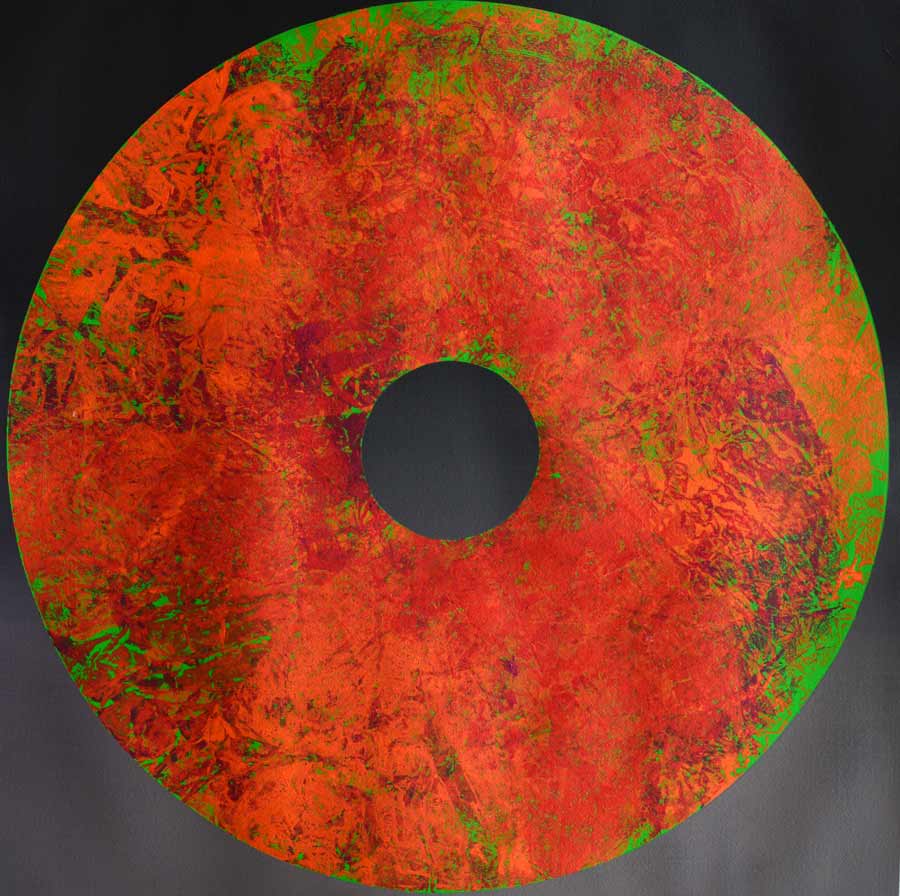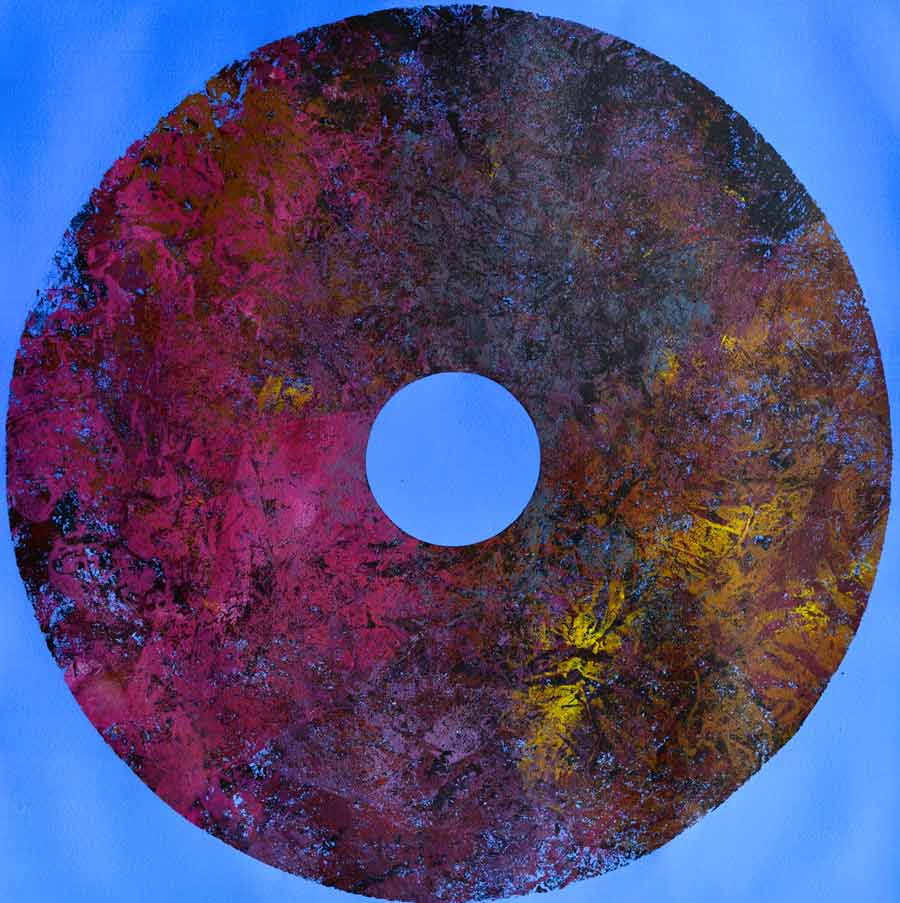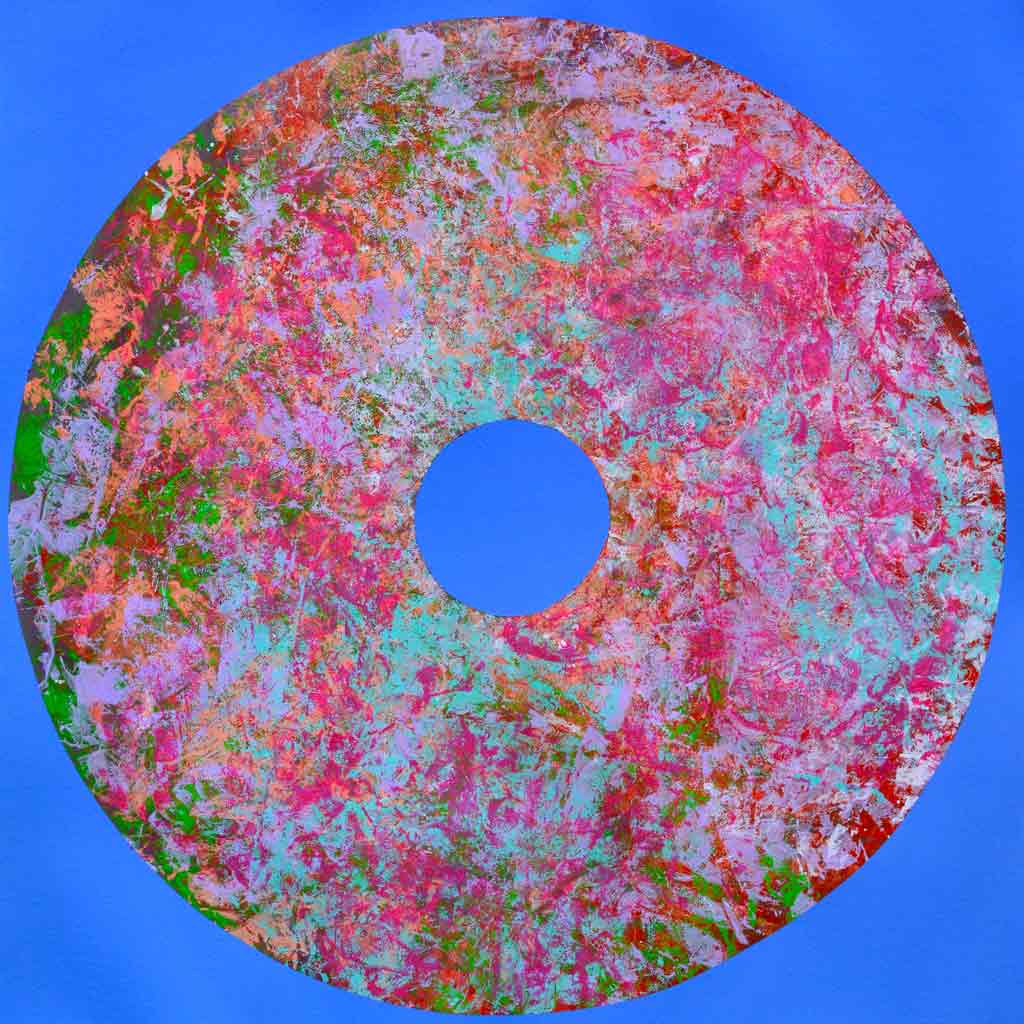


THE DISCS OF SERENITY
TOWARDS SPACES OF SERENITY
I remember having written, back in 1987, the following piece on the occasion of an exhibition in Bâle. « […] Contemplation and meditation only take place if one's mind is freed from its thoughts, like a clean smudge free sheet. In order for us to meditate we must have a space to do so […] ». A little bit further I state : « […] Creating a painting on the subject of contemplation and meditation allows us to listen to ourselves, to create a space of our own. These works of art give way to our dreams, they wake us up. These paintings energize us in such a way that we open up to ourselves so we can grow timeless and spiritual perceptions in our thoughts. These paintings do not only enhance the awareness of our actions and of our energies but also allow us to grow further in the midst of our confusing world […] ».
In 1982, the art critic Gilles Plazy wrote in an editorial piece printed in 'le Quotidien de Paris' : « […] Einbeck is not a creator of mandalas, nor an illustrator of few religions. He is a contemporary artist who has brought together the very essentials of abstract painting with scientific research (and he stays in close contact with researchers of different research domains). In his search for the truth that lies at the essence of our being, he links science to metaphysics and as such brings to surface a fundamental part of kabala that is not the occult version as known in Jewish religion, but as a scientific text that holds a universal wisdom of which we find different versions in many civilizations (in fact between the kabala and the binary signal system of Yi-King there are many similarities). If one names his art 'abstract', even when he refuses to insert figurative elements, it's because he does not attach any meaning to mythical anecdotes, but only to the universal powers of creation that surround us. That is why in his paintings we find these magnetic fields […] ».
At that time I had created the C. I. R. C. L. E. S. (Center of International Research on Color, Light and Elemental Shapes) whose original objectives were to synthesize all the studies on color that had been done around the world. The first concrete action was to put in place a study on the effects of color on cardiovascular diseases at the hospital Ambroise Pare in Paris, with the help of a multidisciplinary scientific team. The works of art were created later and acquired, among others, by the Southwestern Medical Center of the University of Texas in Dallas and the Children's Medical Center in Washington D.C.. Today, the "Disks of Serenity" are the result of the work carried out over a period of decades. It was as if all this knowledge and experience had been digested to leave room for an art of emotion.
Today, the Discs of Serenity are the result of the work of the past decades brought together. It is as if all of the knowledge and research up until today have created a place for art based on emotions that are sacral to life. Even when the Discs of Serenity remind you of the bi discs of antique China, and you can find some resemblance with the aureoles of the saints of Renaissance paintings, their form is a visual combination of the spherical geometry as found in the elements of nature and the archaic and universal image of the circle described by Carl Jung as the symbol within us : «the circle expresses the vastness of the human mind in all its aspects, including the relationship between the human being and the objects found in nature that surround us ».
My work exceeds this strict intellectual notion in that sense that it also can be looked upon as an 'action painting'. A term introduced in 1952 by the American critic Harold Rosenberg in which he stresses the importance of gestures in the work of certain abstract expressionist painters – a tendency which is also to be found in the Color Field group (Clyfford Still, Mark Rothko, Barnett Newman).
Although the Discs of Serenity have a more controlled outlook, they visualize a certain emotion – one that not only causes us to return within ourselves but at the same time openly questions our place in the universe – how to be yourself amongst the others.
A painting about the serenity to be found at the core of our being, about finding the path that leads to some form of spirituality, namely that one of how to be one with the universe.
Following up on my past art achievements (especially at the FIAC in 1981 and at the Gallery Mainetti in Basel in 1987) and on the Discs of Serenity, my attention is now focused on how to create places of revitalization. Places leading to Serenity that should be the paths to well-being, self-contemplation and emotion. Places that could raise awareness to a certain form of consciousness of being in harmony with oneself. Places that can be set up in cities, in public places such as hospitals or hotels, where human beings need to come together so that they can face either the ordeal of sickness or the tumult of daily life.
Robert Einbeck 8 April 2015